The Blue Wing Olive (BWO) is a member of the Baetis family, a common insect found in our beloved Missouri River. This small insect plays a big role in the food chain, serving as an important calorie source for brown and rainbow trout. Let’s explore the entomology, life cycle, and patterns for fishing the Blue Wing Olive hatch.
Timing and Conditions
The Blue Wing Olive hatch typically occurs in the spring and fall, with prime fishing opportunities arising from late March to early May and again from September through November. These transitional seasons bring cooler temperatures and changing weather patterns, creating ideal conditions for this prolific hatch. Water temperatures play a crucial role in triggering the emergence of Blue Wing Olives. As temperatures range between 45°F and 57°F (7°C to 13°C), these mayflies begin their life cycle, hatching from the riverbed and ascending to the water’s surface in vast numbers. The Missouri River’s consistent flows and controlled releases from Holter Dam contribute to the stable water conditions necessary for the Blue Winged Olives to thrive.
The Life Cycle of the Blue Wing Olive (Baetis)
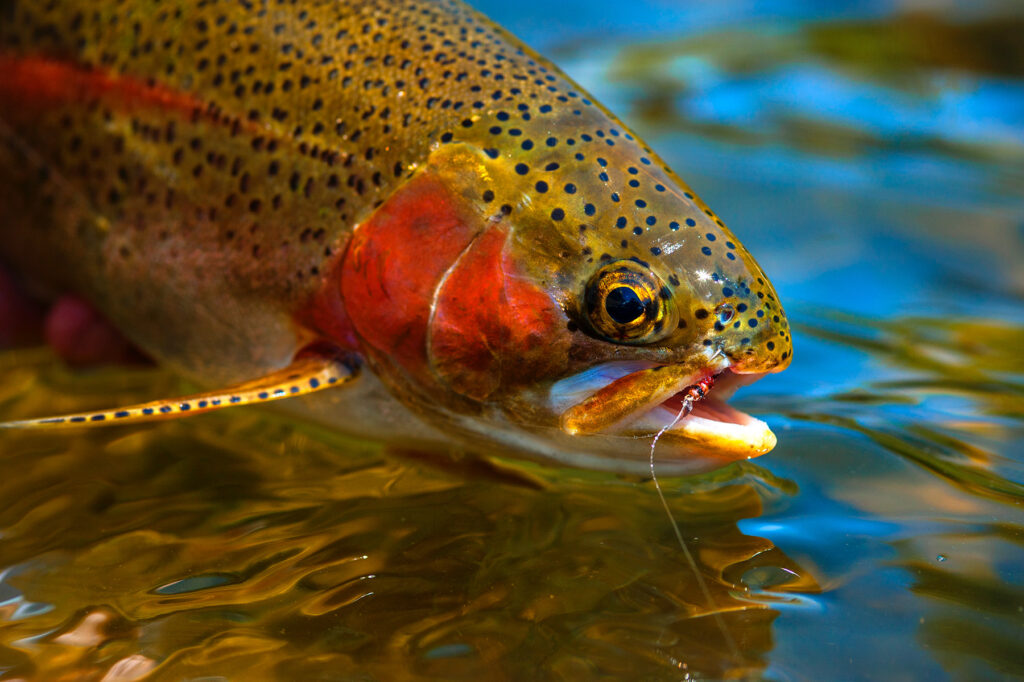
The Blue Wing Olive fly has a unique life cycle that consists of four distinct stages: egg, nymph, dun, and spinner.
Egg Stage: The BWO begins its life as an egg, laid by adult mayflies in the water. The eggs are typically laid in clusters and soon hatch.
Blue Wing Olive Nymph: After hatching, the fly enters its nymph stage, which can last up to two years. During this time, the nymph lives underwater, feeding on algae and other aquatic plants. As it grows, it molts several times, shedding its skin in a process called molting.
Dun/Adult Stage: When the Blue Wing Olive fly is ready to emerge from the water, it enters its dun stage. The nymph swims to the surface, and its skin splits open to reveal a winged adult mayfly. At this stage, the fly is not yet fully developed, with damp and crumpled wings. This is when the BWO is most vulnerable—and when trout eagerly feed on them.
Spinner Stage: Once the Blue Wing Olive fly has fully developed its wings, it enters the spinner stage. This is when the fly takes to the air to mate, and the females lay their eggs in the water, beginning the cycle again. The spinner stage is short-lived; after mating, the fly dies and remains on the water’s surface with its wings spread out.
Characteristics of the Blue Winged Olive Mayfly
The Blue Wing Olive fly is a small mayfly, typically ranging in size from #16 to #20 in fly fishing terms. It has a slender body of dark olive color, and its wings have a distinctive bluish-gray tint. These characteristics make it easy to identify as it emerges from trout streams with its sailboat-like wings. The smallest of the BWOs is the Pseudocloeon, or “Pseudo.” The Pseudo is extremely tiny and often found in sizes #22 to #24. We see swarms of these little guys on the Missouri River in early fall before the larger BWOs emerge.

Significance of the Blue Wing Olive
Prized by anglers for its ability to attract large trout, this fly is particularly effective during the nymph and dun stages. Cripples resembling the bug stuck in the shuck while emerging are a very effective pattern on the Missouri River. In addition to being an effective fishing hatch, the Blue Wing Olive is an indicator of the health of the river system. Mayflies, like PMDs and Blue Wing Olives, are sensitive to changes in water quality and habitat conditions.
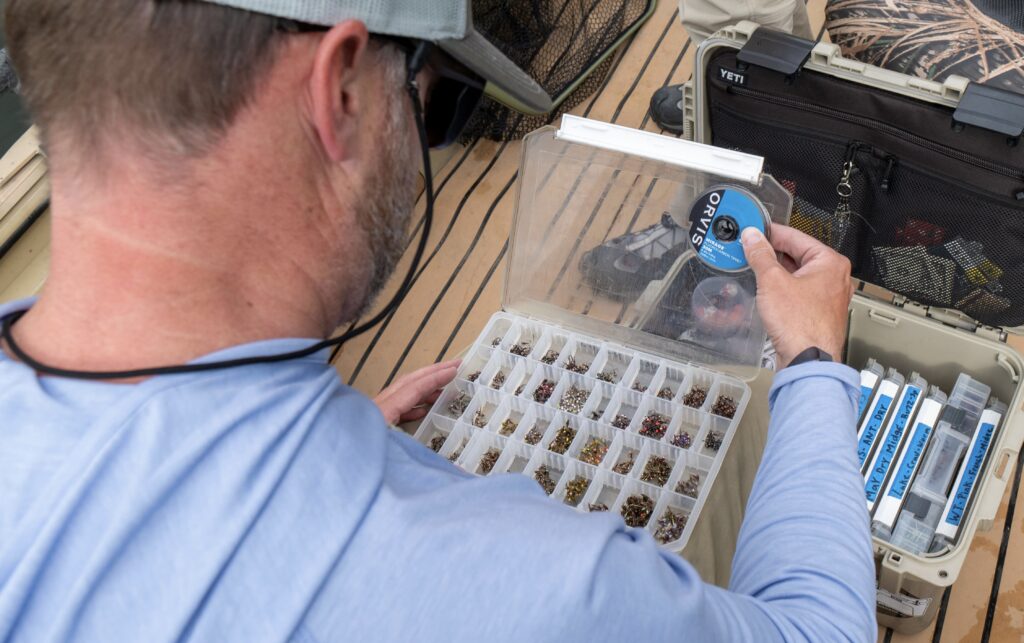
The Best Blue Winged Olive Fly Patterns
When it comes to stocking your fly box with BWO patterns there are plenty to choose from. Mimicking the size, color, and stage of these mayflies is essential for enticing selective Missouri River trout.
Blue Wing Olive Nymph Patterns:
- Split Case BWO: This pattern imitates the BWO nymph well with its slender profile and realistic segmentation. Fish it in sizes #16-20.
- Tailwater Tiny Baetis Nymph: Specifically designed for tailwater fisheries like the Missouri, this pattern is a small and realistic representation of a BWO nymph and makes an excellent dropper of a bigger dry fly.
- Pheasant Tail nymph: The thinly tied PT is a staple on any trout river. A classic that imitates a wide variety of mayfly species in their nymphal stage
- JUJU baetis: Perfectly shaped slender body the Juju baetis is a must have pattern. This fly fishes well all year long but it really shines when fishing the Blue wing olive hatch.
Blue Winged Olive Emerger Fly Patterns:
- WD-40: A simple and effective pattern that imitates an emerging BWO moving through the water column.Best fished in sizes #18-22.
- RS2 : The RS2 is a great BWO emerger pattern that can be fished just below the surface film. It comes in various colors, but gray or olive body are good choices for BWOs.
- Film Critic: Mayfly emergers are often stuck in the film making them easy prey for hungry trout.
Blue Wing Olive Dry Fly Patterns:
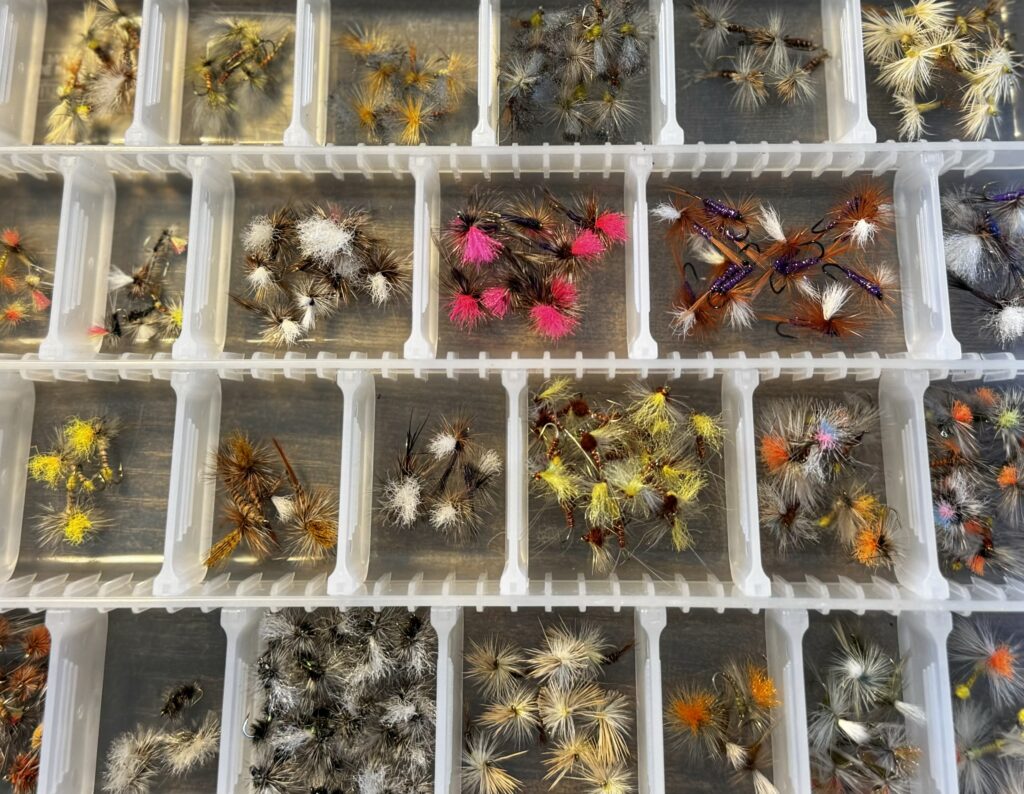
- 401k Baetis: Tied by friend Matt Pederson this fly is great for selective fish. A high vis wing along with CDC and hackle to keep the fly riding low in the water but still propped up on the surface. If you find rising trout on BWO’s definitely try this pattern.
- Last Chance Cripple: BWOs are relatively small, so having low riding cripple patterns in sizes #16-20 can be effective when fish are picky.
- Hi Vis BWO Spinner: This pattern combines the effectiveness of CDC with the profile of a spinner, making it a great choice for imitating spent BWO’s on the surface.
Blue Wing Olives and the Ecosystem
The BWO mayfly plays a vital role in our rivers, serving as a primary food source for many fish species. Trout, in particular, rely heavily on these mayflies for their survival. In addition to their role as fish food, the Blue Winged Olive plays an important role in nutrient cycling. As the nymphs feed on algae and other aquatic plants, they help recycle nutrients within the ecosystem. The Blue Winged Olive fly is a small insect with a big impact on the ecosystem. Its unique life cycle is certainly astonishing. If you have never had the opportunity to fish during a BWO hatch, I highly recommend fishing the Blue Winged Olive hatch along the Missouri River in Craig, Montana.
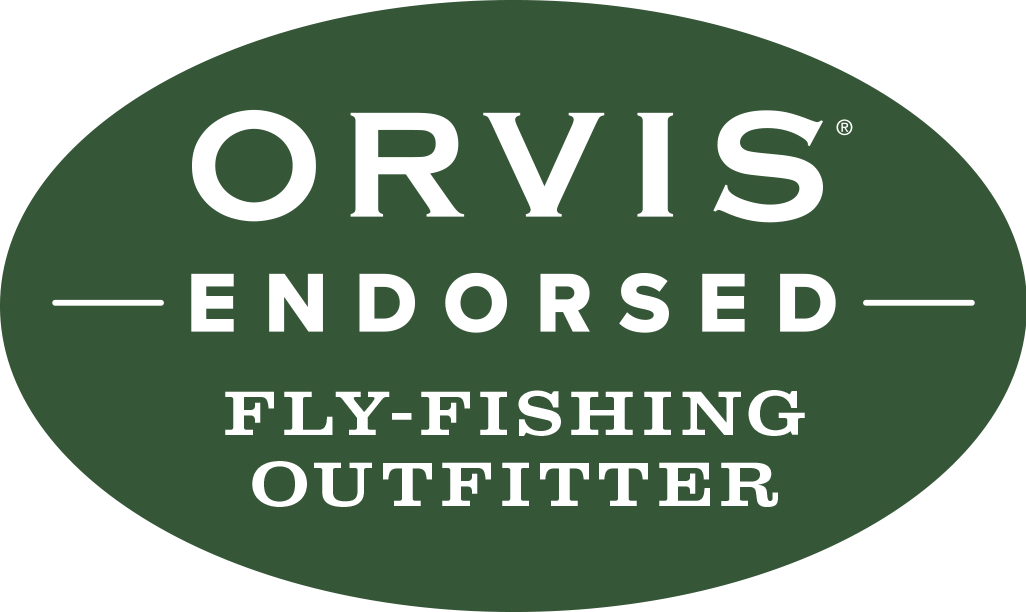
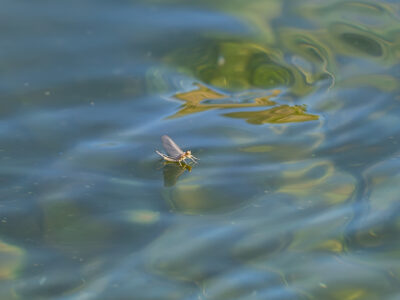
 Holter Dam and the Missouri River
Holter Dam and the Missouri River
Leave a Reply